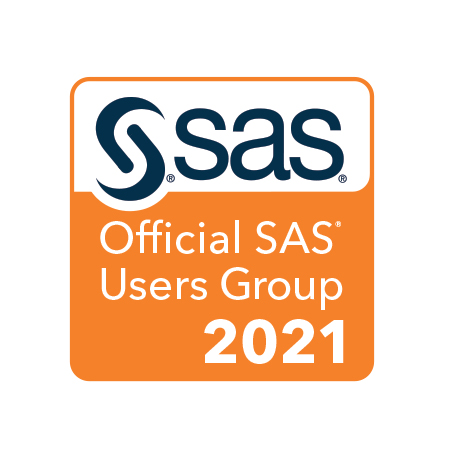The South Central SAS Users Group (SCSUG) is pleased to offer an extensive menu of pre- and post-conference training seminars as part of our annual SCSUG Educational Forum. Seminars are taught by well-known SAS experts from across the country and cover a wide variety of SAS programming topics. Mix and match from the various half-day seminars to create your own custom training curriculum! Note that a separate $170 per seminar fee applies to these training sessions.
(Pre-) (Post-) Getting Started with SAS® Macro Language Basics — Josh Horstman This half-day seminar is designed for the SAS programmer who is new to the Macro Language. We will start at the basics and cover the fundamentals necessary to start applying SAS macros in your programs. By the end of the day you will understand how the Macro Language works, what the Macro Symbol Table is and how to values stored in it, how the SAS System uses Macro Variables, key Macro Language concepts, important SAS Macro Language statements, and how to invoke Macros in your programs. The examples shown in the course materials demonstrate the power and flexibility of this part of the SAS System and will enable you to apply its functionalities to your own programs right away. Intended Audience: Beginner to early intermediate SAS programmers Prerequisites: N/A Powerful PROC SQL Programming Techniques for SAS® Users and Programmer — Kirk Paul Lafler Structured Query Language (SQL) is a universal language used in data science, data analytics, statistics, data management, and other disciplines to access, transform, manipulate and output data stored in SAS data sets, relational databases and tables. Based on Kirk’s new PROC SQL: Beyond the Basics Using SAS®, Third Edition book, this half-day course presents core concepts and techniques to use PROC SQL as a programming and database language. Attendees learn how to construct powerful and scalable queries; define, access, and manipulate data from one or more tables using PROC SQL; subset, order and group data; summarize data down rows and across columns using summary functions; join two or more tables using conventional (equi-joins) and unconventional (left, right and full outer join) methods; apply effective fuzzy matching programming techniques when a table’s key(s) are inconsistent or less than reliable; use the SQL-macro interface to create single-value (or aggregate) and value-list macro variables; construct real-world queries including nearest neighbor processing; first, last and between By-group processing; produce customized output using Output Delivery System (ODS); construct effective indexes to dynamically access rows of data; and “select” query performance considerations. Intended Audience: SAS and SQL users and programmers who want to “leverage” and expand their skills using the SQL procedure Prerequisites: SAS programming experience Advanced SAS® Macro Language Techniques for Building Dynamic Programs — Josh Horstman This seminar shows you how to take advantage of SAS Macro Language capabilities that enable you to write dynamic programs and applications. By mastering the concepts and techniques presented in this class your programs will become free of hard-coded data dependencies, thus eliminating the need to re-write the code every time a data set name, variable name, or other data attribute, changes. Topics will include how to build and process macro variable lists, using the macro language to control the data environment, using control files, working with datasets and libraries in the macro language, accessing the SAS data dictionaries, and other miscellaneous macro topics that will help you create dynamic code. Intended Audience: SAS programmers with good understanding of the SAS Macro language Prerequisites: N/A Advanced Programming Techniques Using SAS® — Kirk Paul Lafler SAS® users who want to expand their programming knowledge will want to attend this Advanced SAS Programming Techniques course. Attendees learn advanced programming techniques in the areas of data access, data manipulation, data management, data presentation, and more. Topics include reading and writing data and results from CSV files and MS-Excel spreadsheets; controlling the flow of data in the input buffer and program data vector (PDV); creating and using user-defined formats and functions; reshaping columns and rows of data with the TRANSPOSE procedure; coding and using one-dimensional and multi-dimensional arrays; using operators and modifiers to search data; DATA step hash object programming techniques; exploring and creating simple and composite indexes; using specialized ODS statistical graphics and graph template language programming techniques in the production of high-resolution output and charts; and using data-driven programming techniques to access NLEVELS (for By-group content); access SAS metadata Dictionary tables (or SASHELP Views) content, the names of the tables available with a libref, determine if a data set is empty, identify the number of observations in any data set, determine the number of character versus numeric variables exist in any data set, and identify variable attributes; use CALL EXECUTE to create executable datadriven code; construct external control tables for data-driven processes; use PROC FORMAT with CNTLIN= option to perform table-lookup techniques; and use iterative programming constructs and processes with PROC SQL and the Macro language to dynamically create data-driven programs. Intended Audience: SAS users and programmers who want to “leverage” and take control of the Base SAS software Prerequisites: SAS programming experience Logistic Regression — Russ Lavery This cartoon format, example rich and interactive seminar is a very easiest way to learn logistic regression. Though it has been around for a long time, logistic regression is one of the most commonly used techniques in professional modeling and data mining. We’ll cover the theory and practice of binary logistic regression in great detail including topics such as: Intended Audience: All SAS users Prerequisites: N/A Introduction to Bayesian Statistics — Russ Lavery Bayesian statistics is growing in popularity every day and should be a tool understood by all modelers. SAS has some excellent PROCS for Bayesian analysis. This introductory cartoon format, example rich and interactive seminar is a very easy way to learn Bayesian statistics. This is an introduction to Bayesian analysis and assumes an understanding of basic statistics and regression…and that the attendee has not forgotten all of high school algebra. Topics covered will be: Why Bayes’ law (formula) makes perfect sense to a frequentist (two examples), Why Bayes’ law (formula) makes perfect sense to a bayesian (two examples) Why we all think like Bayesians (updating beliefs in the presence of new information) A review of some important distributions (beta, bernouli, binomial, gamma) Examples of three closed form solutions: (conjugate priors) updating a percentage with new information updating a Poisson lambda with new information updating a normal distribution with new information The Metropolis Hastings algorithm ad Burn-in Examples of Bayesian regression using SAS Examples of PROC MCMC Intended Audience: All SAS users Prerequisites: Basic statistics and regression Josh Horstman Independent Statistical Programming Consultant and Trainer Josh Horstman is an independent statistical programmer based in Indianapolis with 20 years’ experience using SAS in the life sciences industry. He specializes in analyzing clinical trial data, and his clients have included major pharmaceutical corporations, biotech companies, and research organizations. A SAS Certified Advanced Programmer, Josh loves coding and is a frequent presenter at SAS Global Forum and various regional and local SAS users group. Josh holds a bachelor’s degree in mathematics and computer science, and a master’s degree in statistics from Colorado State University. Kirk Paul Lafler Software Intelligence Corporation Kirk Paul Lafler is an entrepreneur and founder at Software Intelligence Corporation. Kirk has worked with SAS software since 1979 as a SAS consultant, application developer, programmer, certified SAS solutions and education provider, data analyst, infrastructure specialist, performance tuner, educator and author. As a SAS Certified professional, mentor, advisor and SAS programming adjunct professor at the University of California San Diego Extension, Kirk has taught SAS courses, seminars, webinars and workshops to thousands of users around the world.Kirk has written six books including Google® Search Complete (Odyssey Press. 2014) and PROC SQL: Beyond the Basics Using SAS, Second Edition (SAS Press. 2013); hundreds of papers and articles on a variety of SAS topics; served as an Invited speaker, educator, keynote and section leader at SAS user group conferences and meetings around the world; and is the recipient of 25 “Best” contributed paper, hands-on workshop (HOW), and poster awards. Russ Lavery Info coming soon.
Date / Times
8AM – 12PM
1PM – 5PM
Instructor
Wed, 10/16
Getting Started with SAS® Macro Language Basics
Advanced SAS® Macro Language Techniques for Building Dynamic Programs
Josh Horstman
Powerful PROC SQL Programming Techniques for SAS® Users and Programmers
Advanced Programming Techniques Using SAS®
Kirk Paul Lafler
Sat, 10/19
Logistic Regression
Introduction to Bayesian Statistics
Russ Lavery
Nested Loop Consulting

SAS Consultant, Application Developer, Programmer, Data Analyst, Educator & Author



